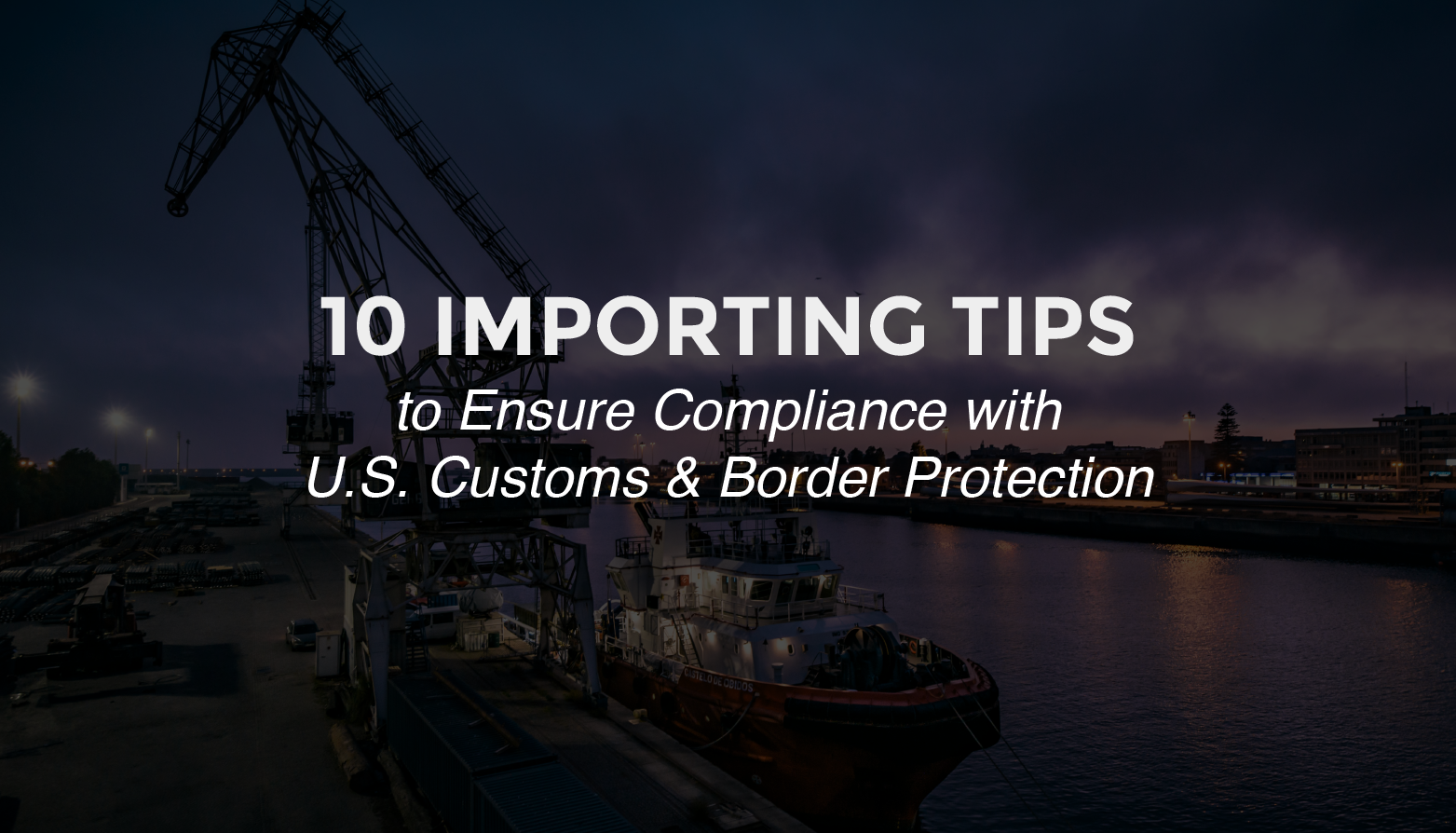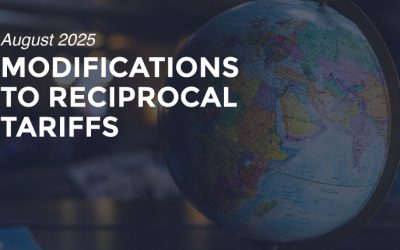Use the 10 tips below as a guide to ensuring your compliance with U.S. Customs when importing into the United States.
Maintaining your compliance with U.S. Customs and Border Protection can seem overwhelming, especially if you are new to the industry of international trade. But you are not alone, even seasoned professionals within the industry are constantly refining their knowledge and approach to Customs compliance.
To help you get started, you can use the following tips as a guide to ensuring your compliance with U.S. Customs.
- Know Your Product
- Confirm you’re using the correct HTSUS
- Vet Your Supplier
- Labeling The Correct Country of Origin
- Keep Records Proving You Used Reasonable Care
- Have a Written Import Compliance Program
- Ensure Your Address is Always Up-To-Date
- Clearly Identify Internal Responsibility
- Respond to Customs Correspondence Quickly
- Have a U.S. Customs Bond in Place with a Sufficient Bond Amount
This may seem like a no-brainer, but the best place to start when it comes to compliance is with a thorough knowledge of the products you plan to import. For example, some questions to explore when selecting products to import are:
Are the goods subject to any regulations by partner government agencies?
Are there any free-trade agreements in place that these goods fall under?
Are the goods possibly subject to Antidumping/Countervailing?
Is forced labor used in the production of this commodity?
Misclassification is a very common issues for importers and can result in a company owing additional money to U.S. Customs if a supplemental duty bill is issued. While importers will typically rely on their U.S. Customs Broker to classify their goods with the correct HTSUS code, you should make sure you review the description of that code within the Harmonized Tariff Schedule.
Ultimately, the importer bringing the goods into the U.S. is responsible for correctly classifying their goods and is responsible for any penalties that arise from misclassification. You can request a binding ruling from U.S. Customs if you are unsure about how an item should be classified.
Before selecting an overseas supplier, you should conduct a thorough analysis of that supplier’s business. You should also request samples of your commodity prior to importing.
Antidumping/Countervailing can also be manufacturer specific, so make sure to check ahead of time if that is the case with your chosen supplier. If that supplier is charging less than their competition within their country, antidumping and/or countervailing may be the reason.
Make sure that you are using the correct labeling when declaring the country of origin for your commodities. Remember, this is the country in which the commodity was manufactured, farmed, or produced which is not always the country you are directly importing from. If you are importing the commodity from a supplier in India, but the commodity was originally produced in China, the country of origin is China.
Keeping your own records concerning you entries into the U.S. can be very helpful if and when U.S. Customs requires further documentation of a part of your importing practices. The general recommendation is to keep documents on file for a minimum of 5 years, but, if possible, a company should establish a system for keeping at least the entry summary for each entry on file indefinitely.
The records kept on file should demonstrate that your company has used reasonable care if their dealings with U.S. Customs. Reasonable care is not directly defined by CBP because it is ultimately up to them what reasonable care looks like in a given situation. This is why it is best for an importer to keep their own records and not rely on an outside service provider for record keeping.
Having a formal written import compliance program outlined for your company will help ensure that your internal team functions as a unit and is aware of the risk associated with importing into the United States. Performing a meaningful risk analysis should be a part of this process and the appropriate senior officials responsible for overseeing the import compliance program within your company should be involved.
Notices from U.S. Customs are sent to your company via the U.S. Postal Service. So having the correct address on file with Customs ensures that you will receive any and all correspondence that CBP sends concerning your entries. Also, if a piece of mail gets returned to CBP because your address is incorrect, they will deem your bond insufficient, stopping you from making any entries, until this is corrected.
At some point in your importing journey, you will receive correspondence from CBP concerning an entry you made or a claim that has been issued. It is important to have a process in place for how to handle these and, maybe most importantly, who is responsible for handling these notices within your company.
Notices from CBP typically arrive addressed to the company as a whole and do not include a named individual in the address. This can lead to important notices getting lost in a mail room or on someone else’s desk if it is not clear who should receive these internally.
If you receive a CF-28, CF-29, or any claim on your U.S. Customs Bond, you should take action immediately. It can take time to communicate back and forth with CBP so getting the process started as quickly as possible will help ensure that you maintain your compliance and oftentimes can result in costing your company less money over time.
Having a sufficient U.S. Customs Bond on file is a required part of the importing process. If your bond is deemed insufficient by CBP, they will give you a limited timeframe to place a bond with a sufficient bond amount before completely stopping you from importing if this requirement is not met.
The best way to ensure you meet this requirement is to work with a bond provider that clearly communicates about the bond and tracks your bond sufficiency over time. Monitoring your bond sufficiency throughout the year can help you avoid the stress of receiving an insufficiency letter.







![[Webinar] How Could Changes to De Minimis Impact Your Company?](https://traderiskguaranty.com/trgpeak/wp-content/uploads/2025/05/trg-how-de-minimis-impacts-customs-bond-webinar-400x250.png)